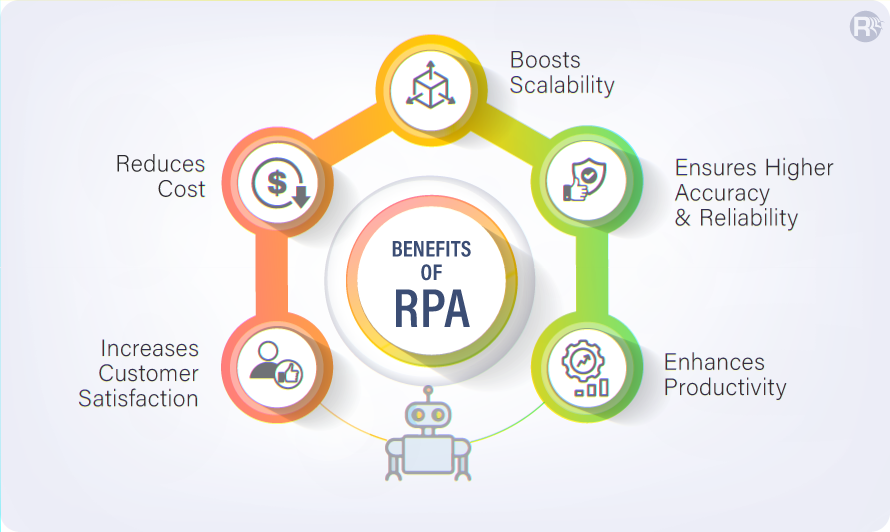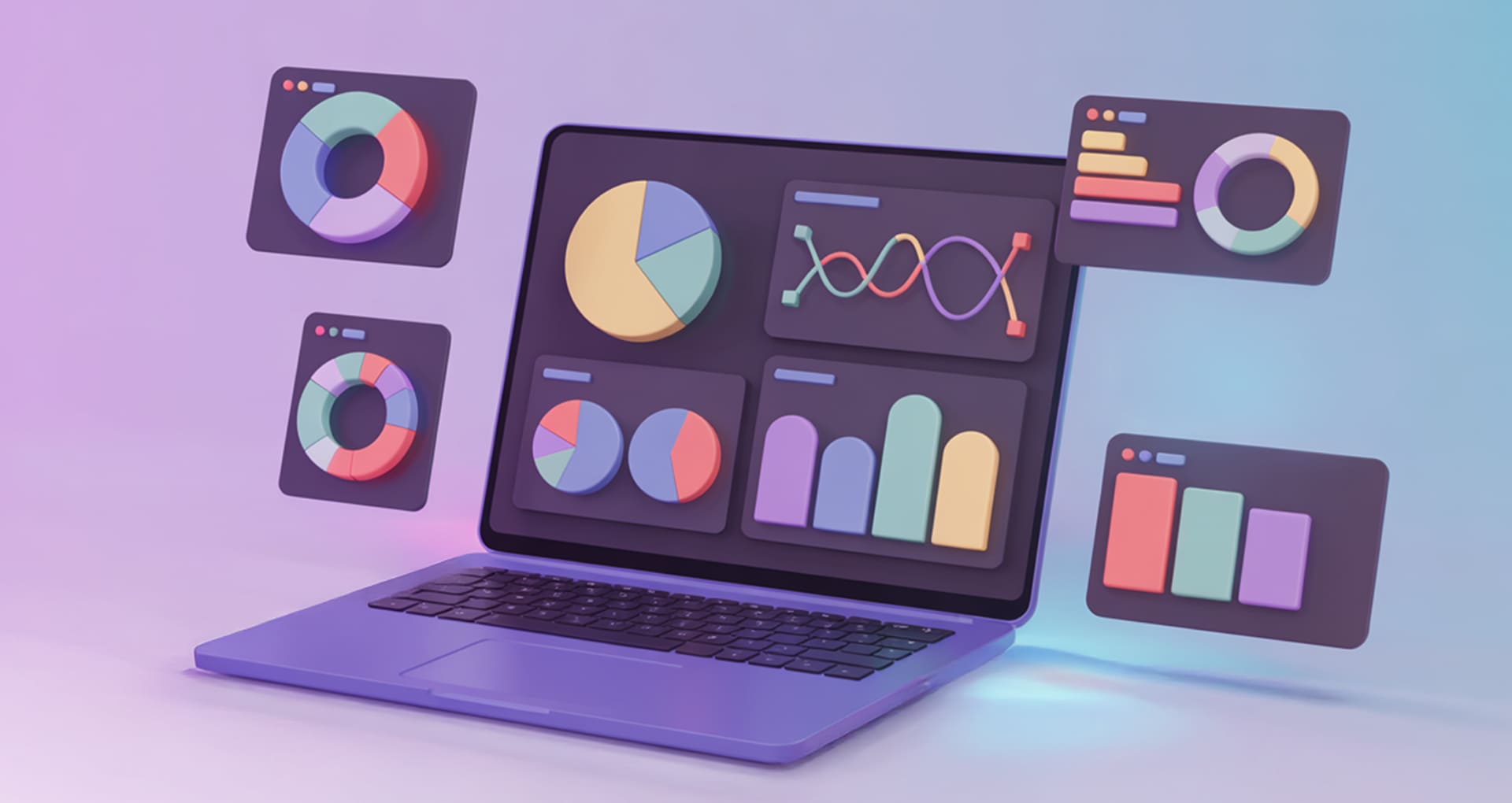Robotic Process Automation or RPA evolved as a technology in the early 2000s. Right from its formative years until now, it has reached staggering heights in machine-led automation. It enables businesses to automate mundane tasks and harness the human potential of their teams to drive efficiencies. Thus, there is less or no room for human error or delays.
Read on to learn how RPA catalyzes digital transformation in today’s fast-paced digital economy and helps businesses align themselves effectively and remain competitive.
How does RPA work?
Simply put, it is a technology that mimics the way humans interact with and think about software applications but at a faster speed and with higher accuracy. It is aimed at automating repetitive, mundane rules-based business processes by using software robots.
Robotic process automation uses information from your existing IT systems. There are different ways to integrate RPA tools with your applications. One option is from the backend by connecting to databases and incorporate enterprise web services. Another is through front-end or desktop connections to read and write data or capture events from the user interface.
Types of Robotic Process Automation Models
Attended
Acts like a personal virtual assistant that works alongside employees to optimize their repetitive tasks. It requires human intervention to perform automation processes.
Unattended
Possesses intelligence and certain decision-making capabilities to work independently. It follows a rules-based process to perform functions such as intensive data processing, data management workloads, or even complete back-office functions. These bots typically operate on a preset schedule that does not require human interaction.
Hybrid
It is an amalgamation of both attended and unattended capabilities. This involves software bots and humans to work as a team passing tasks back and forth to optimize workflows. It is usually touted as perhaps the most effective way of automation.
Business Benefits of RPA (Robotic Process Automation)
The advantages of RPA are wide-ranging and far-reaching. It enables putting bots to work for achieving significant and measurable improvements across customer satisfaction and employee engagement utilizing processing speed, accuracy & cost efficiency.

Reduces Costs
RPA offers an immediate and significant reduction in expenditure investment. While there are upfront costs such as app cost, installation, maintenance, and upgrades yet in the long run any created software robot is far less expensive than the cost of managing full-time employees. And it is for the same amount of work.
By automating manual and redundant day-to-day functions, organizations can lower their overall costs by 30 to 60% while improving delivery quality.
Enhances Productivity
Software robots can perform the same routine tasks at a much faster rate as compared to humans. For instance, if an employee endures four hours to create a specific report, the RPA bot can probably finish the same task in just a few minutes with the right guidance.
Automation of high-volume, repetitive, & tedious tasks creates a step-change in employee productivity allowing them to free up from low-value work so that their expertise, time & effort can be utilized for higher value-added tasks.
Ensures Higher Accuracy & Reliability
Let’s face it. Every human is prone to making mistakes. With RPA in place, you can eliminate processing errors. If the procedures are well defined and the bots are trained and programmed, there is almost 0 error.
Robots are reliable and offer consistent performance even when they are expected to work around the clock. It helps reduce re-works and improve the output quality, drastically by following all rules to the dot.
Boosts Scalability
RPA offers unmatched flexible automation to support any number of business functions to match your changing needs.
It performs numerous operations in parallel, varying from desktop to cloud environments. The army of automated bots can propagate the ease of scalability that would be difficult for humans.
Top Robotic Process Automation (RPA) Tools
UiPath
A popular and progressive RPA tool it enables users to automate different aspects of redundant business processes.
Features:
- Manages numerous processes regardless of their level of complexity
- Contains 300+ pre-defined activity sets that cover the broad spectrum of process automation
- Workflow drag and drop option to create processes instantly
- Ensures high-level security by providing encryption to manage credentials and role-based access rights
Automation Anywhere
A powerful enterprise-grade platform that automates complex tasks. It provides on-premise and cloud services.
Features:
- Intelligent dashboards with real-time operational and business insights using quick reports & analytics
- Private and public cloud infrastructure protected with AES-256 encryption to secure bots and credentials
- Platform-independent
Blue Prism
A highly intelligent RPA tool that helps enterprises to automate business operations in an agile and cost-effective manner.
Features:
- Platform agnostic that can work with any application
- Supports multi-environment deployment model
- Data encryption, load balancing & end-to-end auditing
- Data security and abstraction
How to Implement Robotic Process Automation?
Selection of Business Process
- Some tasks are suitable for automation while others are not.
- A carefully planned strategy to choose the right processes and then map them based on complexity and metrics is necessary.
- Think through what you’re trying to achieve by automating these processes – including purpose, business context, and how it fits in the overall digital transformation journey.
Technical Feasibility Assessment
- It is one of the most vital components for seamless delivery
- Our RPA specialists support you with business readiness analysis, use case discovery, deeper insights on areas of development while creating an effective Proof of concept (POC).
Solution Design
- Each system that needs automation is documented (“as is” – manual task and “to be” – automated process) in a Process Definition Document (PDD).
- The solution design of every process is crafted through Solution Definition Document (SDD) with proposed architecture & required components for review.
Process Development
- As an outcome of brainstorming on the PDD & SDD workflows are generated. It provides the development team the direction to get started with BOT creation by utilizing the automation tools.
- The workflows are then tested and validated with all possible scenarios
Deployment Phase
- The Go-Live is prepared and the complete RPA solution is deployed into the production environment.
As a custom software development company, we assist to identify, analyze, architect, develop, deploy and support a wide range of custom RPA solutions. Our teams support automation of the most tedious and time-consuming tasks that are rule-based, high-volume, redundant, and prone to human errors.
RPA Use Cases
Businesses use software bots as a part of their digital workforce strategy. It helps them address inefficiencies, reduce errors, and handle multiple labor-intensive processes effortlessly. Organizations don’t have to invest heavily in automating essential processes. Listed below are some references of how companies can use RPA effectively across industry verticals;
Healthcare
This sector deals with endless paperwork and administrative tasks. This can take away the staff’s energies and deviate them from offering apt services for patient care.
The organizations in this industry can automate the following;
Appointment Scheduling:
- Custom bots can help fill in the patient’s details and manage registrations
- Seamlessly allocate & schedule the appointments based on doctor’s availability status & working hours
- Even prioritize the patient schedule based on their symptoms
Payment Management:
- Bots help manage & generate invoices along overseeing other financial transactions is an overwhelming and time-consuming process.
- The business process automation technology can send the payment details to the patient to easily receive the payment and update all related systems.
Claim Management:
- For healthcare insurance processes, the bots can help automate the workflows with predefined parameters for claims data collection to eliminate the manual & repetitive tasks
Read more about how healthcare providers can offer customized and interactive patient care with increased efficiency and reduced costs by using RPA.
Information Technology
The technology sector is widely adopting Robotic Process Automation to streamline the development process and increase overall efficiency.
Let’s have a look at how RPA applications are helping this industry:
Software installation:
- Automates the tool/software installation and update processes on the system and saves the employees’ productive time.
Configuration:
- Developers need to write different codes for developing software, applications, and websites. RPA is best for automating the initial configuration and setup of the coding environment.
Automation testing:
- As companies continue to adopt and implement RPA into their structural framework it helps effectively test scenarios, test scripts, data testing & defect management. Further, user acceptance tests have become more accurate and effective with the involvement of RPA. Additionally, common testing scenarios can be automated through software bots, which run after every update.
Banking and Finance
Banks and other financial institutions are known for manual, lengthy business processes that affect overall productivity. But robotics in banking for process automation has changed the game by automating some critical tasks.
Here are some of the most beneficial scenarios for consideration:
Credit Checks:
- RPA software bots can now run credit checks for loan prospects and conduct fitness checks for loan payments based on defined parameters.
- The automation process has significantly reduced the loan processing time.
Data Entry:
- Document scraping helps extract data into forms by minimizing the error probability and taking care of traditional challenges of manual data submission across departments
Customer Service:
- RPA tools can help automate tasks ranging from balance inquiry to general account information seamlessly.
- The bots can effectively respond to conditional queries in real-time and reduce the turnaround time substantially.
Costing Considerations to Measure Business ROI
The ideal business equation is where fewer expenses mean more savings and better ROI generation. As the application of robotic process automation differs from one process category to the other, there is no straightforward mechanism to maximize revenue from its implementation.
To address this, we help companies create an effective roadmap to embody the RPA process implementation, support, and validation of ROI metrics.
The five cost considerations for its adoption include:
- Price of the selected automation tool or toolset
- IT infrastructure investment (additional costs on resources, storage & more)
- Process automation development and implementation
- Training cost (internal teams on how to manage the bots)
- Monitoring and maintenance
Final Words
Robotic process automation is a next-gen technology solution that disrupts digital transformation through its fast and cost-effective approach. It helps expedite processes, deliver a better customer experience, streamline business operations, and drive more productivity into the human workforce. If your enterprise relies on rapid and efficient processes to drive performance and deliver better experiences to end customers, then this technology is for you.
RPA tools can enable robots to capture data, provide desired responses, and also communicate with other digital systems, as and when required. It helps boost productivity, delivers on time & labor savings, improves service levels & promotes agility. We can witness the application of advanced robotic capabilities in the coming years can be mind-boggling.
While RPA is growing in popularity it offers an ocean of opportunities while realizing the intelligent enterprise idea and catching up on cognitive computing. But, it’s soon getting to a place where collaborating with Business Intelligence processes is going to take the tech world by storm. An increasing number of growing businesses are in demand of digital workers (bots) to automating business processes like administrative tasks, billing, accounting, compliance check, and many more.
How Rishabh Software Can Help in Digital Transformation Through RPA
At Rishabh Software, we help organizations accelerate efficiencies by integrating technologies like machine learning and artificial intelligence with robotics process automation to transform the entire business ecosystem. With our end-to-end services, we perform RPA implementation with automation design to integrate it into our client’s technology fabric. Our team helps enhance productivity, reduce operational costs and improve scalability.
We possess the required proficiency and a broader portfolio of software and services with best-fit RPA solutions. It is across domains with Rishabh’s agile project management approach that acts as a catalyst for digital transformation.











 30 Min
30 Min


